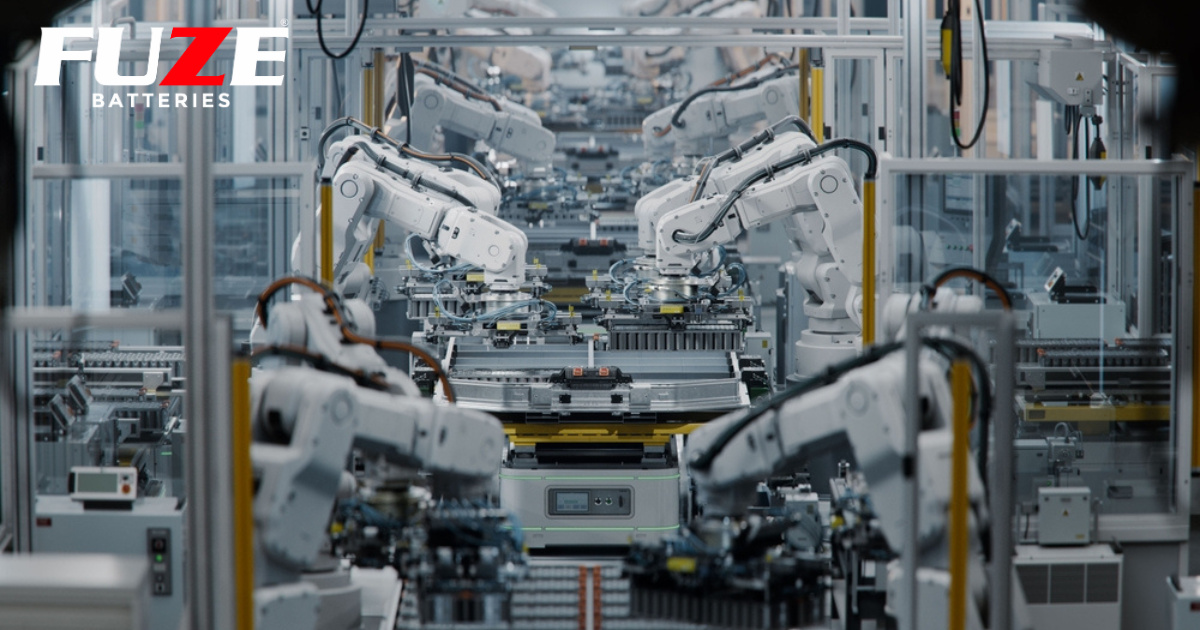In today’s world, uninterrupted power supply has become a necessity, making inverter batteries an essential component of our daily lives. Among the various types of batteries available, tubular inverter batteries stand out for their efficiency, durability, and reliability. As a leading Tubular Inverter Battery Manufacturer, Fuze is committed to providing high-quality products that ensure your power needs are met seamlessly. In this blog, we will explore the working principle of tubular inverter batteries, their components, and the benefits they offer.
What Are Tubular Inverter Batteries?
Tubular inverter batteries are a type of lead-acid battery designed specifically for inverter applications. They consist of tubular positive plates, which provide a larger surface area for better performance and efficiency compared to conventional flat plate batteries. This design allows tubular batteries to deliver higher energy output and a longer life cycle, making them ideal for areas with frequent power cuts.
Components of Tubular Inverter Batteries
To understand how tubular inverter batteries work, it’s essential to know their key components:
1. Tubular Positive Plates: These plates are cylindrical in shape, made of lead dioxide, and are designed to enhance the battery’s surface area. The tubular design ensures better electrolyte distribution, allowing for improved charge and discharge efficiency.
2. Flat Negative Plates: These are typically made of sponge lead, which complements the tubular positive plates. The flat plates play a crucial role in the overall performance and efficiency of the battery.
3. Electrolyte: The electrolyte solution, usually a mixture of sulfuric acid and distilled water, facilitates the flow of ions between the positive and negative plates during the charging and discharging process.
4. Container: The battery container houses the plates and electrolyte. It is made of durable plastic to withstand external conditions and protect the internal components from damage.
5. Vent Caps: These caps allow gases generated during the charging process to escape while preventing contaminants from entering the battery.
How Tubular Inverter Batteries Work
The working principle of tubular inverter batteries is based on electrochemical reactions. Here’s a step-by-step breakdown of the process:
1. Charging Process: When the inverter is connected to the mains electricity, the battery starts charging. During this process, the positive plates undergo a chemical reaction, converting lead dioxide (PbO2) into lead sulfate (PbSO4), while the negative plates transform lead (Pb) into lead sulfate as well. The electrolyte solution facilitates the flow of ions, allowing this reaction to occur efficiently.
2. Discharging Process: When there is a power cut, the inverter draws energy from the tubular inverter battery to supply power to connected devices. In this phase, the process reverses. Lead sulfate on the positive plates is converted back into lead dioxide, while lead sulfate on the negative plates is converted back into lead. This reaction releases electrical energy, which powers your appliances.
3. Cycle Efficiency: Tubular batteries are known for their high cycle efficiency, meaning they can be charged and discharged numerous times without significant degradation. This is primarily due to their superior plate design, which reduces the risk of sulfation—a common issue in conventional batteries that leads to a decrease in capacity.
Benefits of Tubular Inverter Batteries
Choosing tubular inverter batteries offers several advantages:
– Longer Life Span: Tubular batteries typically have a longer lifespan compared to flat plate batteries, often lasting for 5-7 years or more with proper maintenance.
– Higher Capacity: The design allows for higher capacity and better performance, making them suitable for high-load applications.
– Better Deep Cycle Performance: Tubular inverter batteries are capable of deep cycling, meaning they can be discharged and recharged frequently without damaging the battery.
– Low Maintenance: While all lead-acid batteries require some maintenance, tubular batteries generally need less frequent topping up of the electrolyte, making them more convenient for users.
Conclusion
As a reputable tubular inverter battery manufacturer, Fuze is dedicated to producing batteries that not only meet the highest quality standards but also provide reliable performance in various applications. Understanding how tubular inverter batteries work can help you make informed decisions about your power backup solutions. With their superior design and efficiency, tubular inverter batteries are a smart choice for anyone seeking a dependable and long-lasting power source.
Are you ready to experience the benefits of tubular inverter batteries? Contact Fuze today to explore our range of high-quality inverter batteries designed to meet your power needs. Trust us as your preferred tubular inverter battery manufacturer and ensure your home or business remains powered when it matters most!
